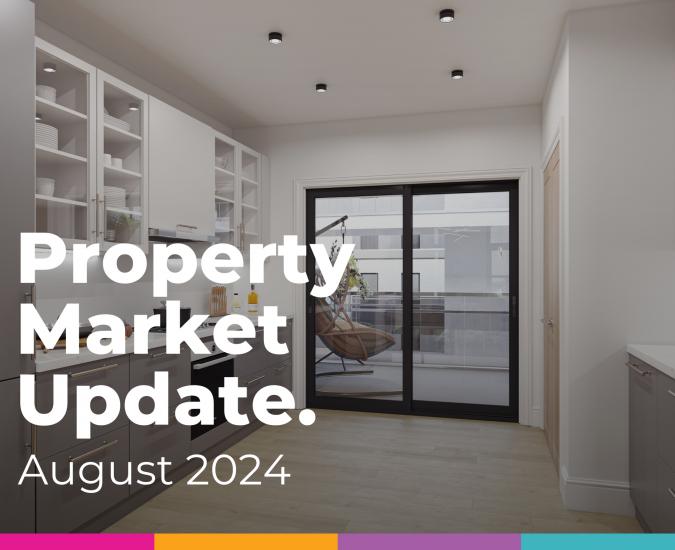9 Ways To Get Into Property With No Money
Last updated 7th September 2022 • Lois Arcari • JaeVee
We know that investing in property is one of the most appealing options to secure your financial future - but having little to no money upfront is the biggest reason people put their property investment dreams on hold.
That's why we've written an all new blog to help you get started with your property investment strategy, whatever your budget is. To make it even easier, we've ranked them from the cheapest to the most expensive options.
1. Get your head in the game
The first, easiest and cheapest thing to start off with is the right frame of mind. It might be free, but nonetheless it's a crucial factor for property investment success.
You have to be hard working, ready for research and resilient.
If you have these qualities, you can turn your hand to any investment strategy and weather any storms in the market as well. Even the biggest investors don’t last for long if they haven't developed these key qualities.
2. Take in a lodger
This is not only one of the cheapest ways to invest in property - it can actually SAVE you money!
The government's Rent a Room scheme means that you’re allowed to earn up to £625 without paying any tax on those earnings - a great way to save money to put aside for your rental property business or to invest in a course for your learning, and get used to tenant needs.
3. REIT
This is where you’re starting to put real sums of money in, but you're not quite ready to finance your first development.
A REIT (real estate investment trust) is a collection of shares in commercial and residential property options collected into a portfolio.
They usually offer a generous and relatively low risk income, as the REIT has to share 90% of its rental profit with its shareholders and is secured against long term company leases.
4. Property lease options
Property lease options are relatively untapped investments with low upfront costs. When you own a property lease option, you can rent out a property without buying it.
You invest some small upfront payment for the process to be legal - as little as £1 - agree a monthly payment to the owner, which is usually set at the amount they need to cover costs and no more, set the length of the agreement and then agree on a purchase price should you wish to buy outright later on.
It can be a tiny upfront investment, with all the benefits of a solid rental income but without the hassle of a mortgage - and if the price goes up beyond your agreed purchase price, you’ll have gained instant equity.
The flip side is that these properties are naturally hard to find, as property lease options offer little for homeowners.
The solution is to go looking in areas with high negative equity - which may not appeal to you for obvious reasons - or run ads targeting people who need to move ASAP, such as divorcees or relocators.
5. Peer to peer lending
Peer to peer lending is where you invest directly with another person or company, and use a peer to peer platform like Zopa to sort out the transaction process for you instead of a bank.
Since the banks aren't taking their cut, if you do it right you can see impressive increases in your ROI. Even better, peer to peer property investment allows you to have a liquid asset, which is usually rare in property, and interest is usually much higher than the bottom scraping interest rate on cash in the bank.
But remember, if you want to invest in peer to peer lending with an individual, these types of loan are usually unsecured - meaning that you won’t see your money back if the borrower defaults.
When you invest in peer to peer business lending, your investment is secured against business assets and property - which is why you should do your research to double check that the company is going steady.
If you use property peer to peer lending - which usually allows developers to do short term refurbs or quick projects - it's also secured against the property.
While this has its risks - say, for example, that the development comes across major delays - being secured against the property usually offers good safety for your money, as your investments can be recovered against the sale of the property.
6. Property crowdfunding
Some budding property investors get property crowdfunding and peer to peer loans mixed up. But they’re actually very different methods of investment.
Property crowdfunding is where groups of property investors pool their money, so that everybody owns a small share. Where the two investment channels differ is that peer to peer lending effectively puts you in the position of mortgage provider, while property crowdfunding gives you a share in equity.
Peer to peer loans allow you to provide a short term loan, while you’ll need to stick to your property crowdfunding investment long term to see real returns. There are two different property investment options.
First of all, you can invest in property developments, where every investor receives a share of the gains from the sale of the development. These can generate higher returns more quickly, but are considered to be a riskier investment.
The other option is buy to let property crowdfunding, which works much like any other buy to let strategy, acquiring rental yields over time and sharing them between investors.
7. Joint venture
You'll already know that we love joint ventures. Think of joint ventures as property crowdfunding on a smaller scale, between 2 or more companies that each have something great to offer each other.
Typically, one will have more cash, and the other will bring non financial value, like access to key growth markets or a great marketing strategy.
These are often favoured by property investors as they start to grow their business, because they offer security, due to their short term nature, and are also a way to develop great business partnerships and property projects without needing a lot of financial wealth.
You can’t use this method at the very start of your career, however, as good joint venture partners will always want to see proof that you have succeeded at property investment before.
8. Use your own equity
We've put this one here because, while it may not necessarily be the most financially costly strategy, it is definitely one of the most costly in other ways if anything goes wrong.
This is a strategy you should only use if you're absolutely confident and have back up funds to handle any blips in your property investment journey, or you could end up seeing the worst and having to move out of your home.
9. Buy UMV and flip
Buying Under Market Value properties to flip is one of the most popular property investment strategies - and because it’s shown so glamorously compared to other methods, it’s also one of the easiest methods to get wrong if you don’t do your research.
Ideally, you’d go hunting for a bargain by looking at auction or off market properties such as repossessed houses or properties from ex landlords, then use a financial strategy like bridging loans to secure finance without getting on the bad side of mortgage brokers.
While this strategy is famous for generating high capital gains when done right, it’s also infamous for having hidden costs. If you don’t properly evaluate the potential costs for refurbishment, then you could be rinsed for unavoidable costs like electrical repairs.
So there you have it, 9 ways to get into property investment with (almost) no money. Which one is your favourite?
For more tips and tricks, take a look at our blog.
Please note this blog post is not to be considered as investment advice. We recommend you seek independent financial advice and conduct your own due diligence before making any investment.




